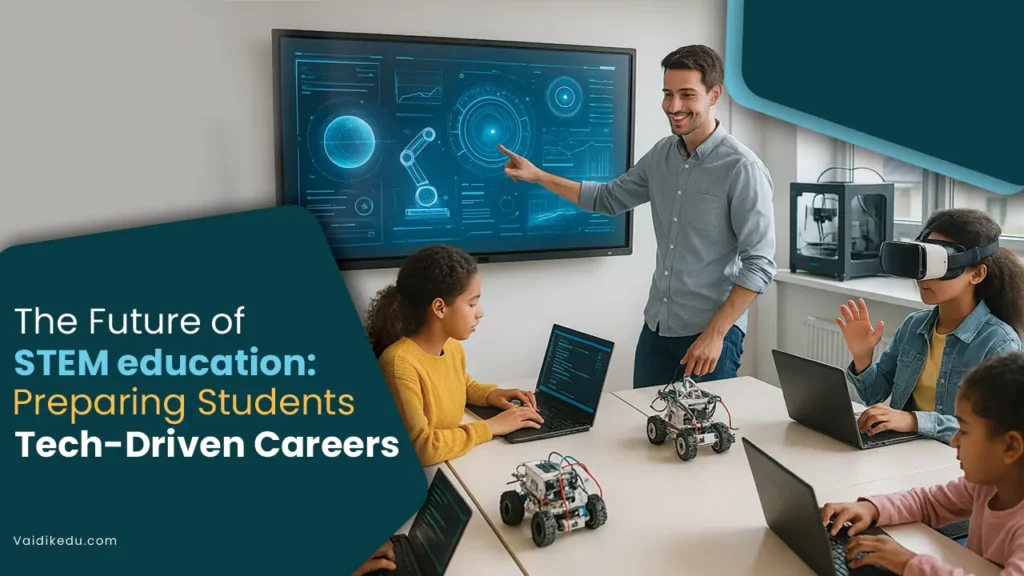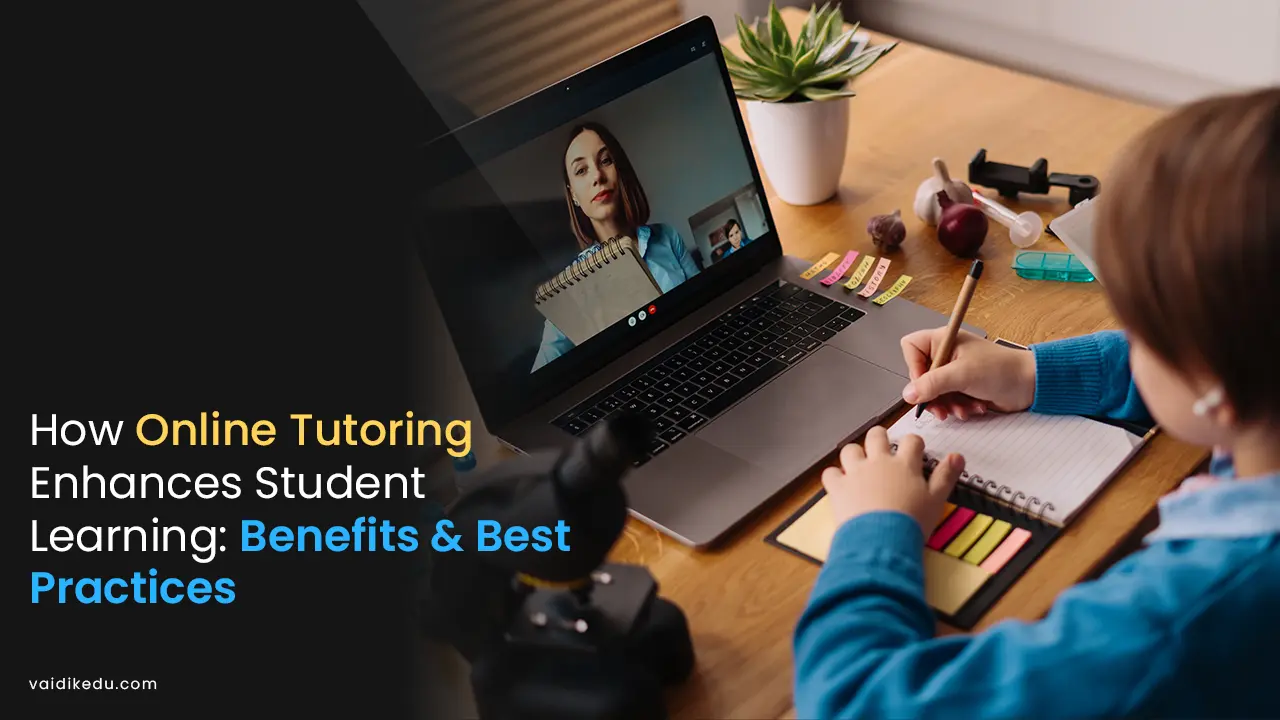Technology is changing fast. The need for skilled STEM professionals is rising. Automation is changing the future of work. So is the development of artificial intelligence. Digital transformation is molding industries worldwide.
It is important to prepare the modern students. This will help them to follow a tech-based career. This blog explores the future of STEM education. It explains how students can gain the skills needed to survive in this world. A technology-focused world.
The Changing Approach To STEM Education
STEM education has traditionally focused on theory. It emphasized technical skills over other areas. However, the future demands a different approach. This new approach combines multiple disciplines, practical learning, and soft skills.
Technologies like quantum computing and machine learning need more than just technical expertise. Workers must be innovative and adaptable. They must also know how to collaborate effectively.
Stressing on Interdisciplinary Learnings:
STEM disciplines are blending more than ever. For example, bioinformatics links biology with data science. Environmental engineering combines chemistry and engineering principles.
To prepare students, traditional subject boundaries must be removed. Curricula should promote collaboration across disciplines. This will help students understand how fields interact.
Real World Applications:
STEM education is becoming more project-based. Students now work on real-world problems. For instance, they might design a sustainable energy solution. They could also build a working prototype of a robot. This hands-on approach allows them to apply their knowledge. It encourages creativity and critical thinking as well.
Role of Emerging Technologies in STEM Education
Emerging technologies are changing the industrial sector. It also paves for new developments in the field of education as well. Some of the tools that led to this change are artificial intelligence and virtual reality. New technologies in STEM education make it more effective. It also improves the effectiveness.
Artificial Intelligence (AI):
AI can look at how students learn. It gives feedback that helps students learn at their speed. AI tutoring systems can adjust to each student’s learning style. This will help students understand better.
Virtual And Augmented Reality (VR/AR)
Virtual and Augmented Reality provides a hands-on learning experience. Consider this example. A biology student can learn the human body in 3D. An engineering student can build a bridge in a virtual world. These experiences help students learn more interactively.
Gamification And Simulation:
Gamified platforms use game elements to teach subjects like math, science, and programming. Simulations let students try out experiments in a safe virtual space. This helps students learn without the dangers or costs of real experiments.
Bridging The skill gaps
Bridging the skills gap is a major challenge in STEM education. It is the gap between academic training and industry needs. Employers often find a mismatch in the skills of graduates. These skills do not always meet workplace requirements. Educators and policymakers can address this challenge. They need to focus on the following areas:
Collaboration of Industries
Partnerships between schools and industries are important. These partnerships help keep the curriculum relevant. Internships and co-op programs are useful for students. They provide real-world exposure. Mentorship programs also give practical experience to students.
Development of Soft Skills
STEM professionals need more than technical skills. They also need communication and teamwork skills. Problem-solving is another important skill. Educational programs should encourage these skills. Group projects and debates are helpful activities. Presentations also promote these soft skills.
Learn Throughout Our Lives:
Technology evolves very quickly. This makes continuous learning essential. STEM education should encourage a lifelong learning attitude. Students should update their skills regularly. Online courses and workshops help with this. Certifications are another way to stay updated.
Promoting Diversity And Inclusion in STEM
Women and minorities face many challenges in STEM. Underrepresented groups also struggle to get more opportunities. These barriers need to be addressed. This will foster innovation. It will ensure fair access to careers in technology.
Encourage Early Exposure
Introducing STEM concepts early sparks interest. It builds confidence among underrepresented groups. Coding camps for girls are helpful. Robotics workshops in underserved areas can also make a difference. These programs have a significant impact.
Mentors And Role Models
Representation is important. Successful STEM professionals from diverse backgrounds can inspire. Highlighting their achievements motivates young learners. Mentorship programs are also valuable. They guide and support students in STEM pathways.
Accessible Education:
Technology can make STEM education affordable. It can also make it more accessible. Online platforms help underserved communities. Open educational resources are useful too. Community-based services also play an important role here.
Preparation For The Future Workforce
As mentioned earlier, Automation and AI are the future. They are changing the entire job market. The nature of work in STEM fields is evolving. Many routine tasks are now automated. Demand for complex problem-solving is growing. Creativity is also in high demand. Emotional intelligence is becoming more important. STEM education must prepare students for this future workforce.
Keep The Focus on Emerging Fields
Educators should focus on new and growing fields. Areas like artificial intelligence need attention. Renewable energy and biotechnology are also important. Specialized courses in these fields are helpful. Research opportunities in these areas prepare students. They equip students for high-demand careers.
Develop Entrepreneurial Mindset
Students must think like entrepreneurs. This empowers them to innovate and create opportunities. Entrepreneurship courses teach valuable skills. Design thinking and business strategy are also important. These courses complement traditional STEM education.
Collaboration on A Global Scale
Future challenges require global cooperation. Problems like climate change need teamwork across cultures. STEM education should encourage cross-cultural collaboration. Students should learn to work in diverse, international teams. This prepares them for global challenges.
The importance of Policy And Investment
Governments, schools, and private organizations shape STEM education. They all play important roles in its future. Policies and investments are key drivers. They promote innovation in education. They also ensure fair access to quality learning.
- Providing Funds For Development And Research
Funding research in educational technologies is important. It accelerates innovation in learning methods. Grants support underprivileged students. Scholarships make STEM education more accessible. These investments benefit many students.
- Training Teachers
Teachers are the foundation of the education system. They need regular training to stay updated. Emerging technologies require new teaching strategies. Ongoing training ensures high-quality STEM education. Well-trained teachers improve student outcomes.
- Campaigns For Public Awareness
Awareness about STEM education is crucial. Campaigns inspire students to pursue STEM careers. Parents also learn the value of these fields. Campaigns can share success stories. They explain the impact of STEM on society. These efforts encourage more interest in STEM fields.
Conclusion
The future of STEM education is dependent on one thing. Adapting to new changes. Modern technologies are changing the world faster than one would expect.
STEM education must keep up with these changes. Interdisciplinary learning is important for this adaptation. Using emerging technologies is equally essential. It should also promote diversity. This helps in preparing the students.
A student must prepare for a tech-based career. They should be trained well. These small measures help us shape the future. For these things to work well, collaboration is the key.
Collaboration of the educational and industrial sectors is very critical. This ensures that STEM education stays relevant. It also makes it more inclusive and impactful.
STEM education is about more than jobs. It equips students to solve future challenges. It prepares them to drive innovation. This innovation should benefit society as a whole. The journey to a tech-driven future begins now. It starts in the classrooms of today.
Frequently Asked Questions
It prepares students to respond in the technological world. The future is technology and automation. Careers in STEM require technical skills. STEM education helps students to develop new technologies. It also develops problem-solving skills in students.
Artificial intelligence and visual reality are some of the emerging technologies. AI creates personalized learning for students. VR provides immersive, hands-on experiences. Gamified platforms make learning fun and engaging. These tools simplify complex ideas. They prepare students for real-world applications.
Schools can introduce STEM concepts early. This can encourage underrepresented groups. Mentorship programs can guide and support students. Highlighting diverse role models inspires learners. Online platforms make STEM more accessible. Affordable resources help underserved communities.
STEM education should teach about emerging fields. These include AI, renewable energy, and biotechnology. Students should also learn teamwork and communication. Problem-solving is another important skill to teach. Cross-cultural collaboration prepares students for global jobs. Encouraging entrepreneurship helps them create new opportunities.









